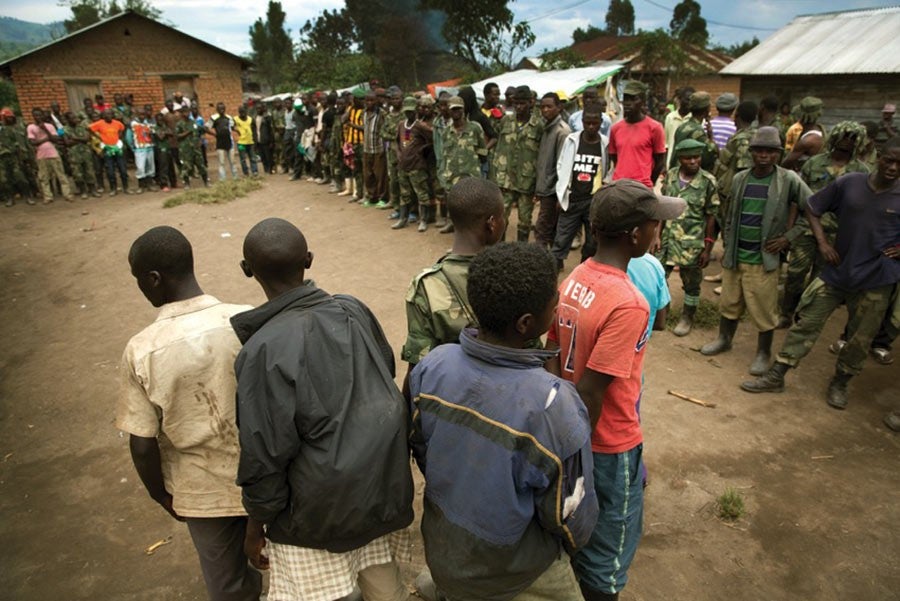
The nature of conflict is changing. Fighting has taken on new forms, often involving a burgeoning constellation of armed groups operating in increasingly complex threat environments that feature not only state armies, but non-state armed groups, criminal gangs, drug-traffickers, and groups designated as terrorist organizations. These actors employ new communications and weapons technologies, and frequently operate across national borders.
The international community’s traditional conflict response and prevention toolbox may not be adequate in the face of these new and emerging realities. Policy responses are necessary to help strengthen conflict response and prevention instruments to tackle local drivers of conflict, with a focus on ex-combatants, their families and communities. This was evidenced in the recent series of meetings of the United Nations Inter-Agency Working Group on Disarmament, Demobilization and Reintegration (DDR), convened to revise and validate the Integrated DDR Standards.
As manifested in the World Bank-UN Pathways for Peace report, the UN Sustaining Peace initiative, and in the African Union (AU)’s policies, conflict prevention goes beyond dealing with the symptoms of conflict, and must also include understanding and addressing the structural root causes of conflict. These structural root causes of conflict – which may include governance and human rights deficits – strongly suggest that conflict prevention and response instruments must operate in tandem.
In the Africa region, the increasing number of peace-support operations calls for a more prominent role of regional bodies, such as the AU and its regional and national architectures, in peace and security issues across the continent. In a 2016 resolution, the African Commission on Human and Peoples’ Rights expressed its concern over the widespread violations of human rights in the many conflicts in Africa. It recognized “the urgent need for institutionalizing a human rights-based approach to conflict prevention, management and resolution on the continent.”
Human rights violations are at the heart of violent conflict and its prevention, and typically constitute foundational elements of the underlying drivers of conflict. In fact, patterns of human rights violations may provide an early indication of a potential conflict. Human rights are also important rudiments of strategies that seek to build sustainable peace and prevent conflict, as they provide guidance on addressing long-standing grievances, inequality, and the lack of opportunity. Meaningful and informed participation as well as equality and non-discrimination – the inclusion of everyone – promote local ownership and sustainability. Human rights also provide a concrete entry point and fundamental guidance for the operationalization of these considerations.
Since 2016, the World Bank, together with the United Nations Department for Peacekeeping Operations (DPKO) has supported efforts spearheaded by the AU to strengthen the integration of human rights into the AU’s conflict response instruments, such as DDR programming. The World Bank’s Global Program for Reintegration Support (GPRS), with support from the World Bank’s Nordic Trust Fund (NTF) on human rights and in collaboration with the UN Office of the High Commissioner for Human Rights (OHCHR), has provided support for strengthening the AU early warning methodologies through the integration of a human rights-based approach into the AU Continental Early Warning System (CEWS). This work has focused on increasing and incentivizing the uptake of primary data sources, using a rights-based approach to data collection, analysis, and action.
DDR aims to mitigate the security risk of ex-combatants who would be left without livelihoods or support networks in the aftermath of a conflict. Ex-combatants are not, however, a homogenous group. They might include children, women, persons with disabilities, or ethnic minorities, each with specific needs and vulnerabilities that DDR programs need to consider and integrate into program design and implementation.

Arguably, DDR is the first touchpoint between national/international partners and the stakeholders that pose the greatest risk to any longer-term peace process. Without strong and sustained alignment with conflict prevention, the chances for DDR programs’ success are poor.
Important elements of successful DDR include: 1) the need to integrate programs with other interventions, and 2) reforms in parallel sectors as part of a larger, more holistic, and longer-term process of security reform and reintegration support. Operationalizing human rights in DDR programs can therefore help to expand the arena of touchpoints with related interventions.
Going forward, the World Bank, in partnership with DPKO and OHCHR, will continue to help strengthen the DDR capacity of African countries – through technical assistance and operational guidance with a dual focus on conflict response and conflict prevention instruments. One prime area will be galvanizing the capacities of African regional centers of excellence – for provision of training and expertise on conflict prevention and response across the continent.
READ MORE:
New Beginnings for Ex-Combatants in Rwanda




Join the Conversation